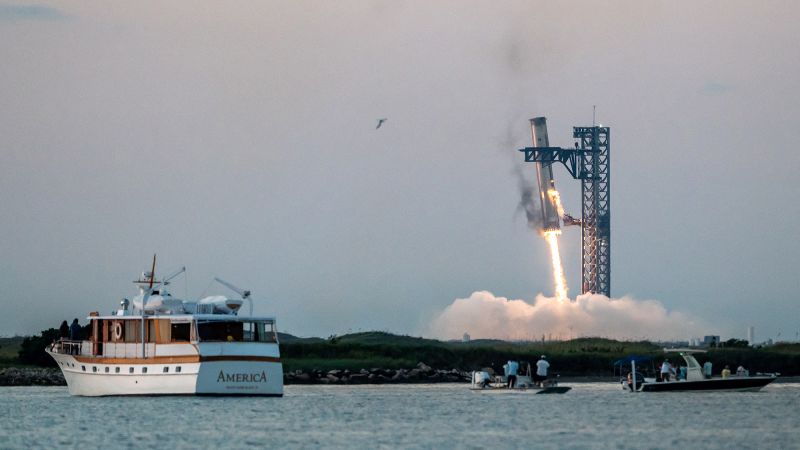A SpaceX Super Heavy rocket booster, as tall as a 20-story building, made a precision midair landing in the arms of its launch tower after a test flight in October. The event was witnessed by many via live stream and broadcast, but only those physically located near the launch site experienced the thunderous noise of the event.
The Super Heavy booster’s return to Earth produced a sonic boom that was as loud as a gunshot at close range, according to a recent study published in the journal JASA Express Letters. The study found that the noise was equivalent to 10 Falcon 9 launches and could be felt as well as heard.
The sonic boom was caused by the booster traveling at supersonic speeds, compressing the air in front of it and creating a shock wave that triggered a sudden increase in air pressure. The phenomenon is widely considered to be one of the key reasons for the downfall of the Concorde, the supersonic British-French passenger jet that cut transatlantic flight times in half but discontinued service in 2003.
SpaceX’s rocket launches are now bringing sonic boom conversations back to the fore. The company is the only one in the world that routinely guides its rockets back to a pinpoint landing after launch, the maneuver that triggers a startling sonic boom. The company mastered this technique over the course of a decade flying its workhorse Falcon 9 rockets.
The Brigham Young researchers estimated that Starship gives off the noise equivalent of 10 Falcon 9 launches. Their analysis was informed by data the team collected at the October 13 test flight as well as earlier research the team conducted at Falcon 9 launches.
The recent study didn’t address the impact on wildlife, but past research has documented an array of effects that sonic booms may have on pets and wild animals. They include startle and stress responses, such as one researcher described witnessing near SpaceX’s launch site in October. “Dogs were barking. We saw some deer running around kind of startled,” he said. “It’s really startling if you don’t know that it’s happening.”
The US Fish and Wildlife Service said that it does not have sonic boom monitoring equipment near the Starship launch site in Texas, but the agency does collect data about sonic booms emitted from Falcon rockets launching from Florida and California.
The FAA is evaluating whether to approve SpaceX’s request to carry out up to 25 Starship flights per year from South Texas. If an environmental assessment concluded that sound levels would rise to the level of significance, the agency would prompt the issuance of an environmental impact statement, a lengthy regulatory process almost certain to slow down SpaceX’s ambitious goals for ramping up Starship development.
SpaceX is instructed to “monitor sonic boom levels of up to three successful authorized operations that involve a Super Heavy booster landing,” according to the agency’s statement. The company is required to “provide the monitoring data to the FAA within 15 days of the launch for review with other post-launch reporting.”

